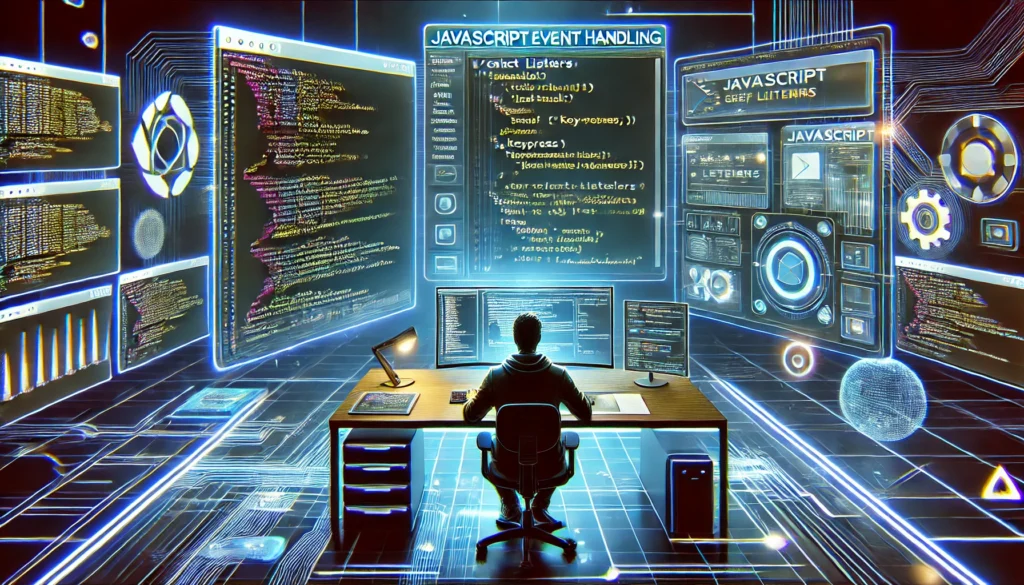
JavaScript event handling is the cornerstone of interactive web development, enabling responses to user actions like clicks, keyboard input, and page interactions. This guide covers everything from basic event listeners to advanced patterns used in modern web applications.
What Are JavaScript Events?
Events are actions or occurrences in the browser that can be detected and handled. Common examples include:
- Mouse Events:
click,mouseover,mouseout - Keyboard Events:
keydown,keyup - Form Events:
submit,input,change - Window Events:
load,resize,scroll
Event Handling Methods
1. Inline HTML Event Handlers (Avoid)
<button onclick="handleClick()">Click Me</button> Why Avoid: Mixes HTML/JS and limits functionality.
2. DOM Level 0 Event Handlers
const button = document.querySelector('#myButton');
button.onclick = function() {
console.log('Button clicked!');
};Limitations: Only one handler per event.
3. Modern Event Listeners (Recommended)
button.addEventListener('click', (e) => {
console.log('Button clicked!', e.target);
});Advantages:
- Multiple handlers per event
- Granular control (capturing/bubbling phase)
- Easy removal with
removeEventListener()
Key Event Concepts
Event Object Properties
| Property | Description |
|---|---|
target | Element that triggered the event |
currentTarget | Element handling the event |
type | Event type (click, keydown, etc.) |
preventDefault() | Stops default browser behavior |
Event Propagation
- Capturing Phase: Window → Target Element
- Target Phase: At the element
- Bubbling Phase: Target → Window
// Listen during capturing phase
parent.addEventListener('click', handler, true);
// Stop propagation
function handler(e) {
e.stopPropagation();
}Advanced Techniques
Event Delegation
Handle events efficiently for dynamic content:
document.querySelector('#list').addEventListener('click', (e) => {
if(e.target.matches('.list-item')) {
console.log('List item clicked:', e.target);
}
});Debouncing & Throttling
Optimize frequent events like resize or scroll:
function debounce(func, timeout = 300) {
let timer;
return (...args) => {
clearTimeout(timer);
timer = setTimeout(() => func.apply(this, args), timeout);
};
}
window.addEventListener('resize', debounce(handleResize));Best Practices
- Remove Unused Listeners
Prevent memory leaks:
const handler = () => { /*...*/ };
element.addEventListener('click', handler);
// Later...
element.removeEventListener('click', handler);- Use Passive Listeners for Scrolling
Improve performance:
window.addEventListener('scroll', handleScroll, { passive: true });- Keyboard Accessibility
Handle keyboard events alongside clicks:
element.addEventListener('keydown', (e) => {
if(e.key === 'Enter' || e.key === ' ') {
handleClick();
}
});Conclusion
JavaScript event handling is essential for creating interactive web applications. By understanding the various types of events, handling methods, and best practices, developers can create more responsive and accessible applications. Emphasizing proper event handling techniques not only enhances user experience but also ensures that applications are maintainable and scalable. Incorporating these strategies into your development workflow can significantly improve the performance and functionality of your web applications, making them more engaging for users.


